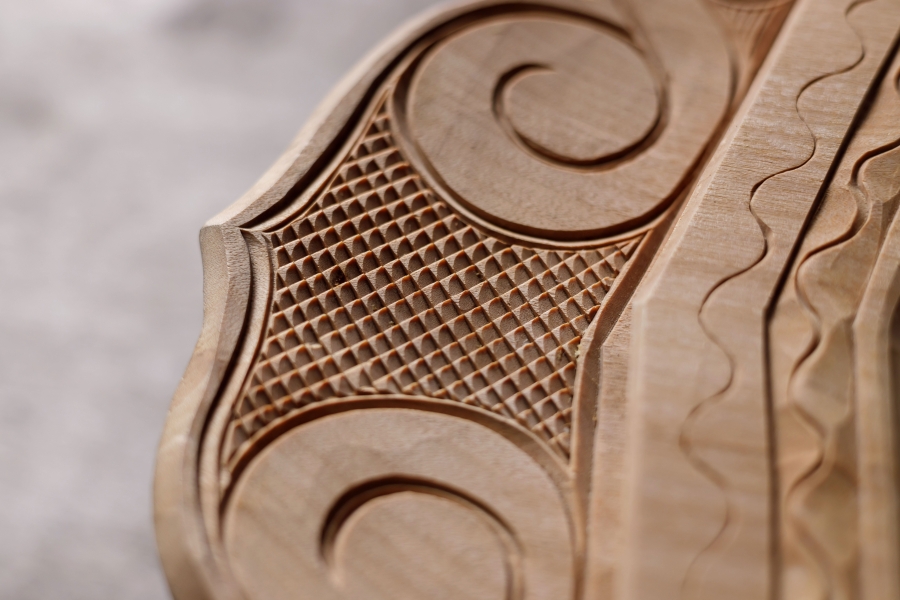The Culture of Wood Carving in the Ainu

The Ainu believed that each tool they made and each object they made had a soul, and they treated them as if they were living things.In particular, they made use of nature’s bounty, using wood as a material to make the folk tools necessary for daily life with their own hands.Many of these wooden products are carved with beautiful Ainu patterns that are thoughtfully combined by the maker, and the individuality of the maker is so evident that it is said that one can tell who carved the product by looking at the patterns.
In old Ainu stories, “a man who is good at wood carving and a woman who is good at needlework” appear as people to be admired, but in Ainu culture, wood carving has basically been handed down as a man’s job and embroidery as a woman’s job.In the Ainu language, there is a word “teketoku” = “one who is good with his hands.Being dexterous was very important because being able to make good tools with your hands meant that you could hunt a lot of game and make a good living.In particular, a small carved wooden sword called a “makiri” was an important tool for the Ainu people, essential for hunting, gathering, cooking, and making daily utensils.It is said that the skill of the carver is tested by the finish of the makiri, and in the past, it was customary for a man to present a woman he liked with a makiri he had made as a token of his courtship.
In the Meiji period (1868-1912) and later, they began to make use of their wood-carving skills to produce souvenirs in addition to their own products.In the early days, Ainu daily necessities such as bowls, chopsticks, and models of tools were produced, but by the end of the Meiji period, dolls and wooden carved bears began to be made.
Thus, the culture of wood carving is closely related to the Ainu way of life and has been passed down to the present day as an Ainu craft, changing its form over time.

